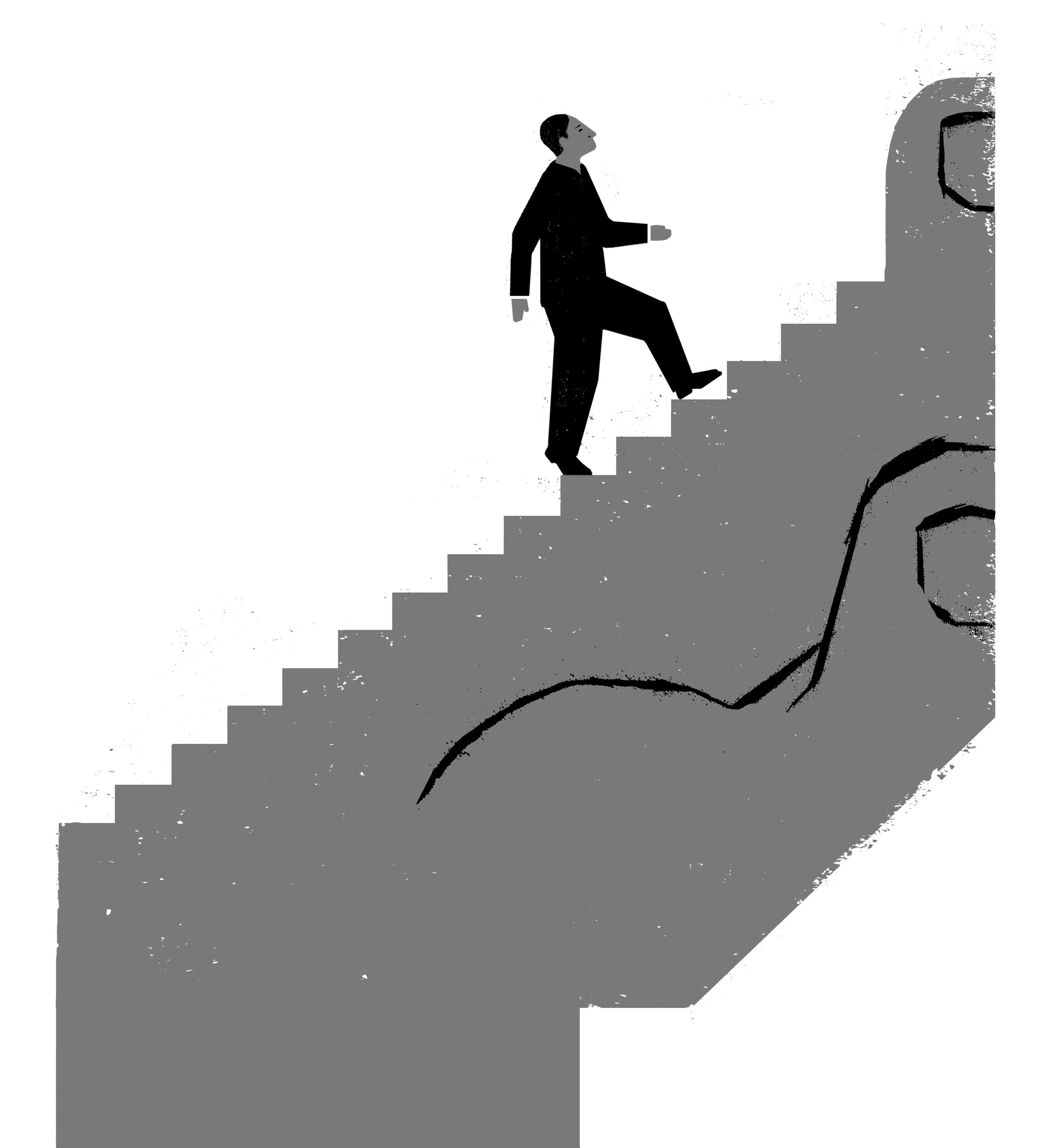President Trump and Republicans in general have been touting the low U.S. unemployment rate, which now sits at 3.7 percent. This is close to what economists regard as full employment, or the best the U.S. economy can reasonably be expected to do. What this number doesn’t tell us, however, is what kind of jobs people have, how many jobs they are working in an attempt to make ends meet, and how much they get paid as a result of all their efforts.
Wages and wage stagnation, rather than jobs, are the pressing issues today. Median wages have barely kept pace with inflation over the past four decades. Many middle-class families have held on by working more jobs, more hours, and taking on more debt. Almost all income gains in the entire U.S. economy over several decades have gone to the very wealthy. As a result, the share of total income going to the top 1 percent of earners (with an average income of nearly $1.5 million) has risen from 8.9 percent in the late 1970s to 22 percent in 2015.
The search is on for solutions that might help average Americans, those earning much less than $1.5 million annually. Proposals such as raising the minimum wage and expanding the government safety net have received considerable attention; however, these policy changes can have only a limited impact. They would help those at the bottom of the income distribution but would do little for the middle class, which has also been struggling. Furthermore, policies focused almost entirely on the poor have their own set of problems. They are underfunded, they receive little political support, they create welfare traps, and they stigmatize program recipients.
Enter Universal Basic Income (UBI), a hot topic in policy circles at the moment and a popular solution to the problems of wage stagnation and technological unemployment, or joblessness caused by the introduction of advanced technology. Basic income, it is being proposed, should be universal, or given to everyone. It is basic because people will only get the minimum needed to survive. Most advocates push for monthly payments of $1,000 to all Americans. This would be nearly enough to bring every American above the poverty line. (For 2018, the poverty rate for a single individual is $12,140 in the contiguous 48 states and the District of Columbia.) And basic income provides money income rather than in-kind government benefits, such as health care.
Universal Basic Income has a great deal going for it. It is a comparatively simple way to confront the problem of stagnant or falling wages; it addresses the concerns that many people have about rising technological unemployment by breaking the link between employment and income; and it avoids the stigmatization of the poor that results from widespread opposition to anti-poverty programs.
Furthermore, in an era of increasing polarization, basic income is the rare policy idea that has received support from economists across the entire political spectrum. Conservative Milton Friedman saw it as a way to reduce the reach of government bureaucracy, save money spent on anti-poverty programs, and increase individual freedom. James Tobin, who like Friedman won a Nobel prize in economics, saw it as a way to promote greater equality, increase consumer spending, and spur economic growth. On the left, John Kenneth Galbraith saw it as a necessary policy in an affluent society where we need to worry less about producing as much as possible and more about people having sufficient income.
An extra $1,000 each month would surely make a huge difference in most people’s lives. For families struggling to make ends meet, the extra income would be of considerable help, providing money for food, housing, emergency expenses, and even enabling them to save a little. The reduced stress in people’s lives would improve their health and lower health care expenditures. Money paid to families on behalf of their children could be used to help finance child care. Still, there are concerns about behavioral changes from a large income grant.
Basic income pilot projects are currently underway in a number of places to study this. These pilots seek to simulate something close to a controlled experiment—give some people a basic income and compare this group to a control group that gets nothing. Y Combinator, a private venture capital firm concerned about the impact of technology on employment, has funded a basic income pilot in Oakland, California, involving more than 1,000 recipients. Magnolia Mother’s Trust will provide $1,000 a month to 15 poor African-American women in Mississippi starting in December 2018. Some of the issues of interest in these endeavors are the impact of a large basic income on labor force participation, education, marriage, and family size.
Basic income experiments are also taking place outside the United States. Canada, the Netherlands, Scotland, and Spain all have pilots underway. And GiveDirectly, a U.S. nonprofit, is currently conducting the world’s largest basic income experiment in Kenya. One advantage of locating the project in Kenya is that, at little cost, people can receive a monthly basic income that is itself equal to the current average monthly income in this East African country.
Another important issue is where to get the money to pay everyone $1,000 a month. The Congressional Budget Office projects that the U.S. budget deficit will be around $1 trillion this fiscal year (2018–19), and that it will keep rising over time, with U.S. government debt soaring to $30 trillion over the next decade. If the cost of a basic income program is not funded, the money for it will have to be borrowed by the U.S. government. There are limits as to how much money people will lend the government at reasonably low interest rates, and more than likely we are approaching this point. After that, the government will be able to borrow only by offering very high rates. This will benefit the well-to-do, who will receive more interest on their savings. On the other hand, those in debt will face higher interest rates on their debt, and it will cost them more to pay off that debt. Middle-class families will see their main asset (their home) fall in value as interest rates rise and it becomes more difficult and more expensive to get a mortgage.
The simple math of a large basic income is rather daunting. Giving every American $1,000 each month would cost $320 billion—or $4 trillion each year. This works out to 20 percent of the entire U.S. gross domestic product. It is also close to the total amount of money spent by the federal government in 2017, including defense spending, government salaries, interest on the national debt, spending for programs such as Social Security and Medicare, government aid to low-income households, and everything else.
Moreover, this is a very conservative estimate. It assumes that there will be no behavioral changes from such a large basic income. Improved health from having additional income will likely increase birth rates and reduce death rates. Having to pay more people increases total program costs. Similarly, if paid employment falls, either from reduced work effort or due to the higher taxes necessary to fund the program, costs will be even greater. If work effort falls by just 5 percent, the loss will be 5 percent of our entire economy plus another $200 billion in lost government tax revenues.
Where might we get such a large sum of money? Repealing the 2017 Republican tax reform would help, but this would yield only $150 billion each year. Some have suggested that a $1,000 basic income would allow us to eliminate all government programs that aid those with low incomes; still, the nearly $750 billion in savings from doing this would be peanuts relative to the trillions of dollars needed to finance such a generous basic income program. Others propose eliminating Social Security and Medicare, which would generate more revenue, around $1.6 trillion. This of course raises far more serious questions—what do we do about health care for the elderly? And why would we take away retirees’ Social Security payments that average $1,400 a month and were paid for with Social Security taxes during their working career, in order to give them $1,000 a month?
Interest on the government debt, national defense, and the social programs mentioned in the previous paragraph comprise the vast majority of the $4 trillion that the federal government spends each year. We cannot fail to pay interest on government debt since this will hinder our nation’s ability to borrow, and there are both practical and political limits to how much we can cut defense spending. Given an inability to sharply reduce government spending, tax hikes will be necessary to finance any large basic income program. Even with massive cuts in government expenditures, at least $2 trillion in additional tax revenue will be required to fund a basic income program that gives everyone $1,000 a month. Taxes on individual incomes and corporate profits would have to more than double in order to generate revenues approaching $2 trillion.
A final issue concerns whether there is a better way for the government to spend any additional tax revenue than simply giving it back to people in the form of basic income. Considerable research on programs supporting children finds a few that are highly effective—universal preschool, prenatal care, and Nurse-Family Partnerships (early home-visiting programs for new mothers). Professor David Kirp of the University of California, Berkeley, describes these programs in his book Kids First and presents evidence that they should pay for themselves in the long run as a result of the higher future earnings from program participants.
We also have an infrastructure shortfall (see my article in the April Washington Spectator) that needs addressing. Our bridges and roads have been neglected for years; mass transit is also in a state of disrepair. All this costs time (when trains get delayed) and lives (when bridges and roads collapse). Likewise, we seem headed toward environmental disaster. Government efforts to save the planet must compete with money that would be given to everyone. These forms of spending are investments in our future and should receive top priority.
Having said all this, there is something to be said for looking at extreme ideas in order to devise workable policy solutions. As Aristotle noted, virtue is usually a mean between extremes. Middle ways between no basic income and giving everyone $1,000 a month are easy to find.
One approach, which I favor and have advanced, would be to provide a basic income of a few thousand dollars per year that goes only to children. Virtually every developed nation has such a policy in place, called child or family allowance. Considerable research has shown that having children grow up in poverty comes with large costs to the nation, including increased health costs, increased government spending over long periods of time, and lower tax collections. Child allowances of several thousand dollars a year can be paid for in the long run with the increased revenues and lower costs due to lower child poverty rates.
Another possibility is a smaller basic income of a few hundred dollars a month paid to everyone. There should be few negative behavioral effects as a result of a small income grant; the costs would be manageable; and the extra income, while not large, would still make a big difference to low-income families.
Before the Republican tax reform bill was passed at the very end of last year, the United States had something close to a basic income program. Every head of household got a tax exemption for themselves, their spouse, and their children. In 2017 each tax exemption reduced taxable income by $4,000, saving families hundreds of dollars. The government could have just as easily written a check to each family for the amount of money they saved on their taxes, which is the essence of a basic income program.
However, unlike basic income, where everyone receives the same amount of money, tax exemptions are an upside-down income-support program—the rich get more than the middle class, and the middle class get more than the poor. The reason for this is that the rich are in higher tax brackets and so get a bigger tax break for each exemption. For someone in the top (40 percent) tax bracket, this comes out to $1,600 per person. For someone in the 25 percent tax bracket, the gain is $1,000; for someone in the 10 percent bracket, the gain is merely $400. Even worse, those owing no taxes get nothing.
A small basic income for everyone could be funded by returning to the 2017 tax law and converting personal tax exemptions into a basic income grant or a refundable tax credit. It would be paid for entirely, and it would be of considerable help to the many American families struggling to pay their bills or facing some emergency expenses.
Given decades of wage stagnation, as well as increasing concentration of income and wealth among the top 1 percent of U.S. households, it is time to take basic income seriously as a policy proposal. Even a small foot in the door, judiciously financed, would be a big step forward to a more extensive universal basic income.
The author is professor of economics at Colorado State University, author of Fifty Major Economists, 3rd edition (Routledge, 2013), and vice president of the Association for Social Economics.





0 Comments